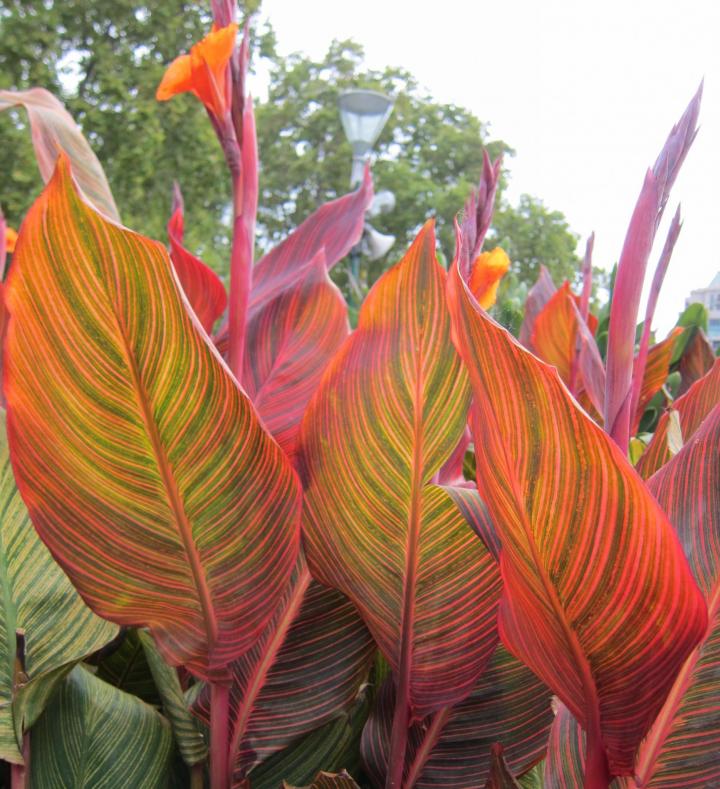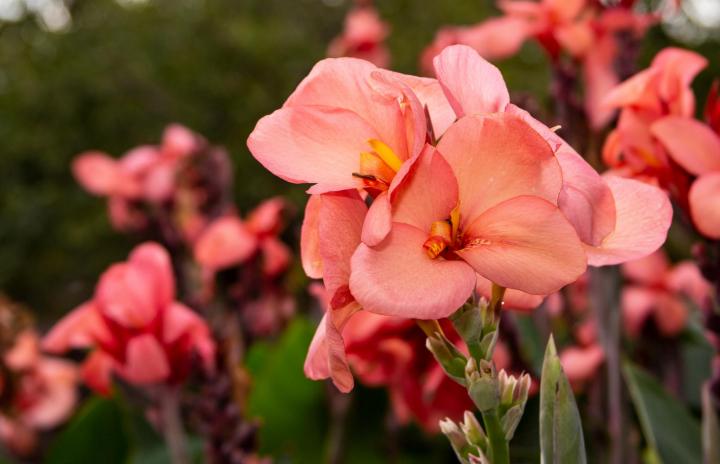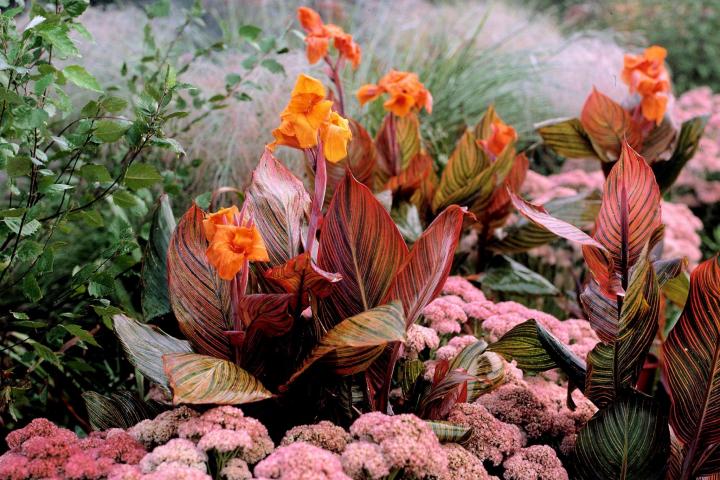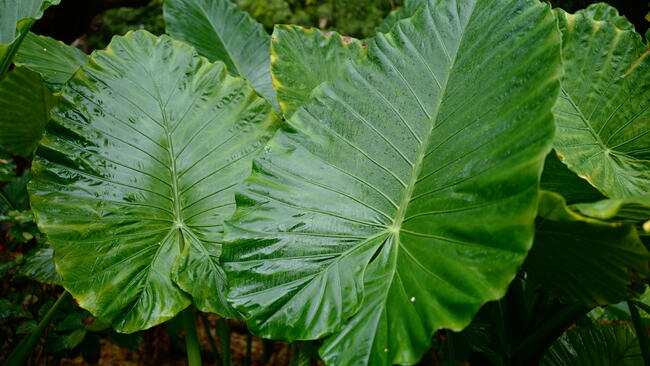
Caption
Canna Tropicanna®: The original Tropicanna, Tropicanna Gold, and Tropicanna Black
Big, Bold, and Beautiful: How to Grow and Care for Canna Lilies
Read Next
Types
- ‘City of Portland’: 4 to 5 feet tall; green foliage with coral-pink flowers
- Ehemann’s canna: 5 to 8 feet tall; green foliage with deep rose-pink flowers
- ’Pretoria’, aka Bengal Tiger: 4 to 6 feet tall; variegated yellow-and-green-striped foliage with orange flowers
- ‘Futurity Red’: 2 to 4 feet tall, on average; burgundy foliage with crimson flowers; self-cleaning (drops spent flowers)
- ‘Toucan Yellow’: 2 1/2 to 4 feet tall; deep green foliage with golden-yellow flowers
- For a tall canna, the Canna Tropicanna® is a popular choice. Growing 4 to 6 feet tall, ‘Tropicanna’ boasts tangerine, iris-like blooms and exotic bronze foliage. Plant in the back of your garden bed or large containers for a dramatic statement on your porch or patio.

- A medium-size gem is ‘Los Angeles’, which has large, deep pink florets and opens out so that you can see the face. Growing 4 to 5 feet tall, this canna blooms from June to August.

As well as medium- to tall-size cannas, you can find smaller “dwarf” sizes and dramatic “giant” sizes!
- Dwarf cannas stand 2 to 4 feet tall and are easy to fit into our downsized modern gardens. The ‘Picasso’ is a real attention-getter with bright yellow flowers and deep red leopard-like spots; it blooms from July to frost. The ‘Wyoming’ has dark burgundy stems and lush orange flowers that bring life to a quiet bed from mid-summer until frost.
- Interested in a giant canna? One of the most popular is the ‘Musifolia’, which grows up to 8 feet! With 3-foot-long red-vein leaves and red blooms, it makes a statement.
Gardening Products
More Like This
Hi Shirley,
Canna lilies are tall plants with extensive root systems so they need large, sturdy containers—at least 18 inches in diameter per rhizome—to thrive. It is likely that your medium pot will not be sufficient enough for your plant to reach its full potential, so it would be best to upgrade to a larger container that can both support root system growth and reduce the chance that it will become top heavy and tip over as it matures.
Given that your plant is in the midst of its growing season, you will want to wait until it finishes blooming for the season and its foliage begins to die back before transplanting to a new container. When you do transplant, you will want to use fresh potting mix and follow the planting tips outlined above.
Hope this helps!
Hi Nan,
You should leave you canna plants in the container during the winter months. Depending on how low temperatures are expected to get, you can leave them outside or bring them indoors and place in a cool, dry location.
In the spring, you can then remove the rhizomes and plant them directly into the ground. Depending on the size of your rhizomes, you can also divide at this time. Just make sure each divided piece has at least one eye. If you chose not to divide, remember that cannas should be divided every 3 to 4 years.
When planting in the ground, give your cannas room to grow as the rhizomes will spread.
- « Previous
- 1
- 2
- …
- 10
- Next »











Comments